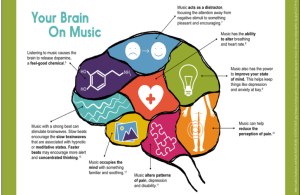Melodic Intonation Therapy (MIT): A Hopeful Approach to Speech Therapy
Melodic Intonation Therapy (MIT) is a specialized speech therapy technique designed to help individuals with aphasia, a language disorder often resulting from brain injury or stroke. Developed by Dr. Albert Eisenson in the 1970s, MIT leverages the brain’s musical and rhythmic capacities to aid in language recovery. Here’s a closer look at how MIT works, its benefits, and who might benefit from this innovative therapy.
What is Melodic Intonation Therapy?
MIT is based on the principle that melody and rhythm can facilitate language production, particularly when traditional verbal communication is impaired. The therapy involves using musical intonation patterns, where speech is sung or chanted rather than spoken. These melodic patterns help engage different parts of the brain responsible for language, often tapping into areas less affected by the injury.
The therapy is structured around three main phases:
- Singing Simple Phrases: The therapist starts by having the individual sing simple phrases or sentences, often with exaggerated musical intonation. This phase helps in building basic vocal and rhythmic control.
- Gradual Transition to Speech: As the individual becomes more comfortable, the therapy gradually shifts from singing to a more natural, conversational tone. The aim is to transition from melodic to more traditional speech patterns while retaining the benefits of the rhythmic and melodic cues.
- Increasing Complexity: The final phase involves practicing more complex sentences and conversational exchanges, with continued emphasis on melody and rhythm to support language production.
How Does MIT Work?
MIT leverages the brain’s ability to process melody and rhythm, which can be less affected by aphasia compared to the ability to process language. When a person with aphasia sings or chants phrases, it stimulates the right hemisphere of the brain, which is more involved in musical processing. This stimulation can help bridge gaps in the language centers of the left hemisphere that may have been damaged.
Who Can Benefit from MIT?
MIT is primarily used for individuals with non-fluent aphasia, a type of aphasia where speech production is significantly impaired. This includes:
- Stroke Survivors: Those who have experienced a stroke affecting language areas in the brain.
- Brain Injury Patients: Individuals recovering from traumatic brain injuries that impact speech.
- Other Neurological Conditions: People with neurological disorders that affect speech production.
Benefits of Melodic Intonation Therapy
- Improved Speech Production: MIT can help individuals with aphasia improve their ability to produce speech, even when they struggle with traditional speech methods.
- Enhanced Communication: By improving speech capabilities, MIT can help individuals communicate more effectively with family, friends, and others.
- Increased Motivation: The musical and rhythmic nature of MIT can make therapy sessions more engaging and enjoyable, potentially increasing motivation and adherence.
- Rehabilitation Support: MIT can be a valuable part of a comprehensive rehabilitation program, complementing other speech therapy techniques and strategies.
What to Expect During MIT
MIT sessions typically involve the following:
- Assessment: A speech therapist will assess the individual’s specific needs, language abilities, and therapy goals.
- Personalized Approach: The therapy will be tailored to the individual’s abilities and progress, with adjustments made as needed.
- Consistent Practice: Regular practice and repetition are key to achieving and maintaining improvements.
In Conclusion
Melodic Intonation Therapy offers a hopeful and innovative approach to language rehabilitation for individuals with aphasia. By harnessing the power of melody and rhythm, MIT can help improve speech production and enhance communication for those struggling with the effects of brain injury or stroke. For many, this therapy represents not just a method of recovery but a path to rediscovering the joy of expression and connection.
If you or a loved one is considering MIT, consult with a qualified speech therapist to explore how this therapy might be integrated into a broader rehabilitation plan. With dedication and the right support, MIT can be a powerful tool in reclaiming the ability to communicate and engaging more fully with the world.


